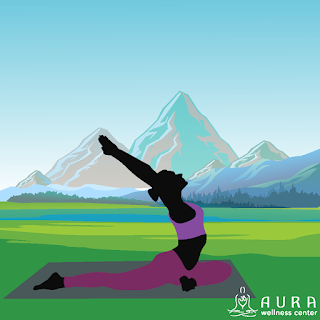In a prior article, I discussed how many individuals have “issues in the tissues” – ways that their bodies have absorbed and held challenging (and even traumatic, in some cases) experiences. I offered some initial guidelines for handling these situations, with the example of a private student of mine who often cries in our sessions. Such tools include active listening, creating a non-judgmental atmosphere, and appropriate humor.
With another student, getting into the Heart (Anahata) and Solar-Plexus (Manipura) Chakras activates emotional release. She has a good amount of excess tension in those areas, which I think causes her chronic shoulder pain. I believe that she tenses and closes those areas at her job as a public transit bus driver. In any case, when we do heart-opening poses, such as backbends, she seems to lose concentration and focus; her eyes start to focus far off into the distance, she gets quiet, and doesn’t seem to hear my next cue (and when I repeat it, she gives some form of “What? Oh, yes, sorry”).
At other times, she’ll talk off on a tangent, telling me about something difficult that happened to her that week. It went deeper at another point, her describing to me how “everything changed when my father passed away”. These two chakras relate to close relationships, the love that we give and receive, our senses of action in the world, and self-efficacy. In all of these cases, I listen, offer a short bit of validation (such as “Yes, that must be hard.”), and give other indicators of my openness and listening (such as with body positioning, facial expression, and eye contact). I am a Registered Dance/Movement Therapist, and I have training as a mental health counselor. In the context of yoga instruction, however, I know that that’s not my role. Sometimes something in me wants to go deeper into these things with her, but I hold my tongue and move on to the next posture or flow. As I said before, I think that it’s very important for us instructors to be clear on what is and isn’t within our responsibilities.
I think that it’s also vital for us yoga instructors to show non-judgement in these ways when students get emotional. If they fear emotional release, or a negative reaction that we might have to it, what yoga could help them release will remain eating at them inside. On one hand, it’s not typically a primary focus in yoga instruction to help students release emotional “baggage”, and oftentimes it takes extra training – such as that to be a certified Yoga Therapist – to be fully competent at safely handling such release. On the other, we can expand what yoga can offer our students if we allow them to release what they need to under our guidance. In addition, I don’t think fear should be involved in the teacher/student relationship. There’s just no reason for it, and it could be very unhealthy.
If, however, you are working with a student privately whose emotional issues you believe are beyond the scope of your expertise, there’s always the option of referral to another professional. That could be to a Yoga Therapist (as mentioned), a pyscho-therapist, a psychiatrist, or another yoga instructor who has more experience handling mental health concerns. I think that it’s a good idea to have a few of each of these types of professionals in your network, to be able to offer to your students as referrals if need be.
All in all, we yoga instructors hold the role of guiding students in yoga practice, a science of overall, holistic wellness. That includes emotional wellness, as it inevitably intertwines with physical, spiritual, and all other types of health. When difficult memories and emotions surface during this journey of yoga practice, we can most beneficially support students by offering a reassuring and welcoming presence as this process of emotional release unfolds. After that release, the world will have a little less hurt, a little less heavy baggage – at least for a sweet moment or two. What a gift that is to be able to offer our world, I think!
© Copyright - Aura Wellness Center – Publications Division
See our testimonials to find out what our graduates have to say about our selection of online teacher certification courses.
Please feel free to share our posts with your friends, colleagues, and favorite social media networks.







